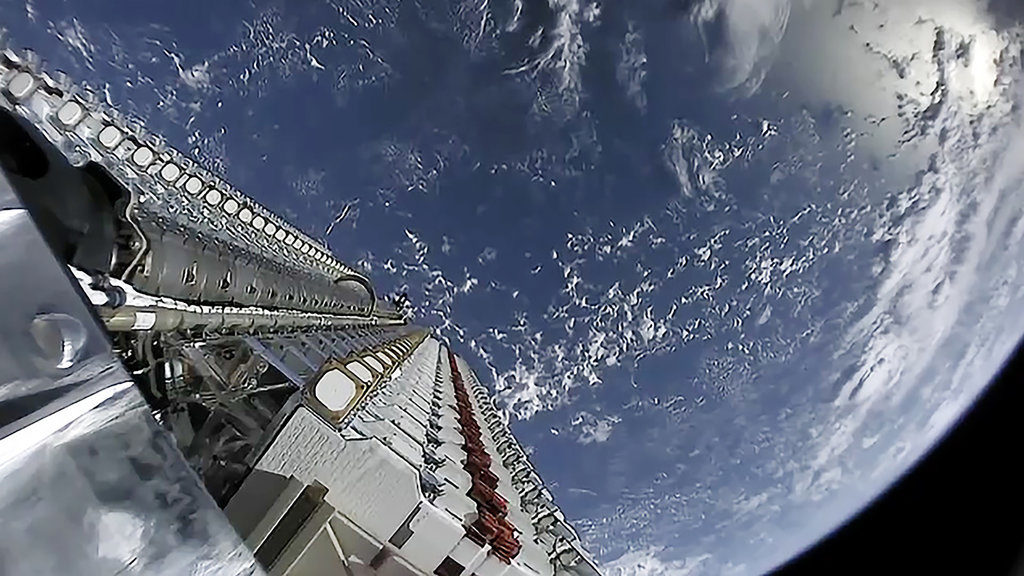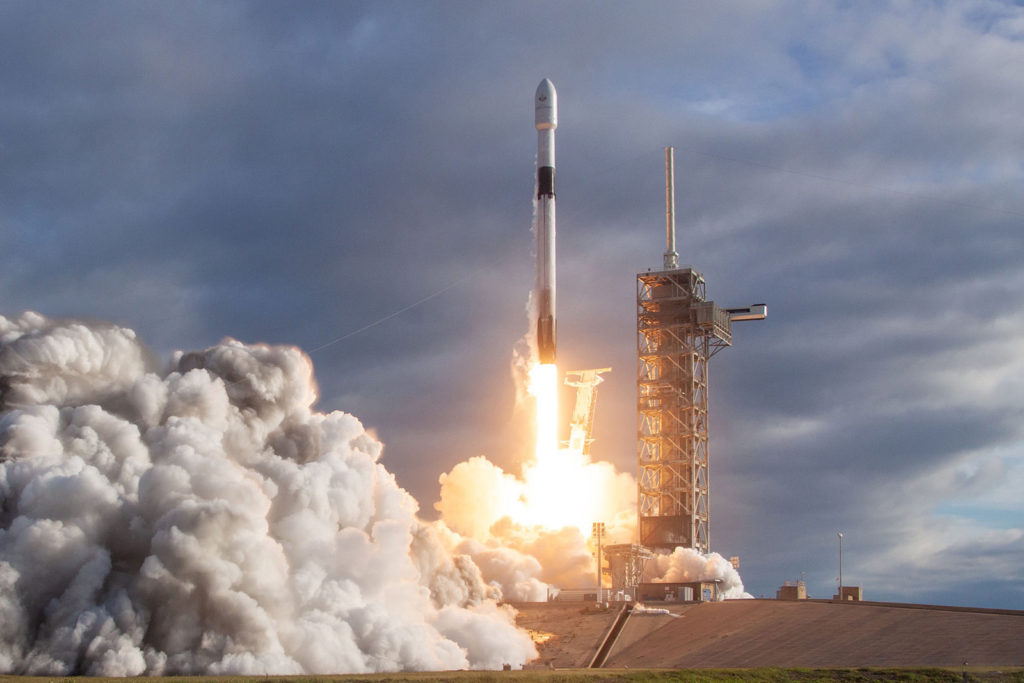On Monday morning, SpaceX launched one of its reusable rockets from Cape Canaveral, Fla., carrying 60 satellites into space at once. It was the second payload of Starlink, its planned constellation of tens of thousands of orbiting transmitters to beam internet service across the globe.
This mission will set up this new batch of 60 Starlink satellites in orbit, which feature increase spectrum capacity and construction that features 100% “demisability,” which means that at the end of their operating life they’ll burn up completely upon controlled re-entry to ensure there’s nothing left behind once they’re no longer in use. This is one of six launches of Starlink satellites that SpaceX says will lead up to the launch of its service across the U.S. and Canada, and one of 24 launches that will enable global high-bandwidth broadband service.
Besides setting up the foundation for its global satellite internet network, this launch is noteworthy from the perspective of SpaceX’s focus on re-usability. The first stage for the Falcon 9 used here previously flew on three separate missions, a record for a Falcon 9 booster in terms of re-use, and the fairing used to protect the payload also flew before on the Falcon Heavy Arabsat-6A mission launched earlier this year. SpaceX also plans to land the booster again, and it will attempt to recover the fairing once again using its sea-borne catcher vessels in the Atlantic.


- SpaceX said one of the new 60 satellites may not complete orbit raising after separating from the rocket, in which case that one satellite will burn up in the Earth’s atmosphere. The company says Starlink components are “100% demisable,” meaning none should reach Earth’s surface.
- Of the 60 Starlink satellites SpaceX launched in May, three lost contact and two were selected for intentional de-orbiting. SpaceX officials have acknowledged the company’s early satellites may fail, but have sought to compensate for that by launching them to low orbits where atmospheric drag will sweep up malfunctioning spacecraft in 25 years or less. Advertisement
- SpaceX launched the second batch of Starlink satellites into an altitude 160 kilometers lower than those in its May launch, meaning defunct satellites will deorbit more rapidly. Starlink satellites use Krypton-fueled electric thrusters to reach their target orbit after leaving their rocket.
- The U.S. Federal Communications Commission on Nov. 7 approved a SpaceX request to test its new satellites at a 350-kilometer orbit. While SpaceX’s early constellation deployment is focused on deploying satellites at 550 kilometers, the company has FCC approval for around 7,500 satellites near 350 kilometers.
- SpaceX’s first two Starlink launches are for a constellation that could grow to 12,000 satellites, though the company’s recent filings with the International Telecommunication Union request spectrum for an additional 30,000 satellites. Elon Musk, SpaceX’s founder and CEO, said in May that Starlink would be “economically viable” at 1,000 satellites, with additional spacecraft supporting customer demand.
- SpaceX’s. Nov. 11 Starlink launch was the first to reuse a payload fairing from an earlier mission. SpaceX previously used the same payload fairing on the Arabsat-6A Falcon Heavy launch in April.
- The Nov. 11 launch was also the first time SpaceX flew the same booster for a fourth time. The same rocket booster launched 10 Iridium Next satellites in July 2018, the Argentine space agency CONAE’s Saocom-1A satellite in October 2018, and Indonesian satellite operator PSN’s Nusantara Satu satellite this past February.
- SpaceX landed the booster on the drone ship Of Course I Still Love You in the Atlantic Ocean. The company’s Block 5 Falcon 9 rockets are designed for 10 flights of the first stage. The rocket’s second stage is single-use.
- Gwynne Shotwell, SpaceX’s president and chief operating officer, said in September that the company might launch a total of five Starlink missions this year, and hopes to launch 24 Starlink missions in 2020.
- SpaceX has demonstrated speeds of 610 megabits per second using Starlink satellites with the U.S. military. Musk has also tweeted through the satellites. SpaceX anticipates starting regional service with Starlink next year.
- “We still have a ways to go from tweets to 4K cat videos, but we are on our way,” Lyons said.
- SpaceX is competing with several other companies, notably Amazon, OneWeb and Telesat, that are also seeking to deploy hundreds or thousands of satellites to bring global internet access from space.